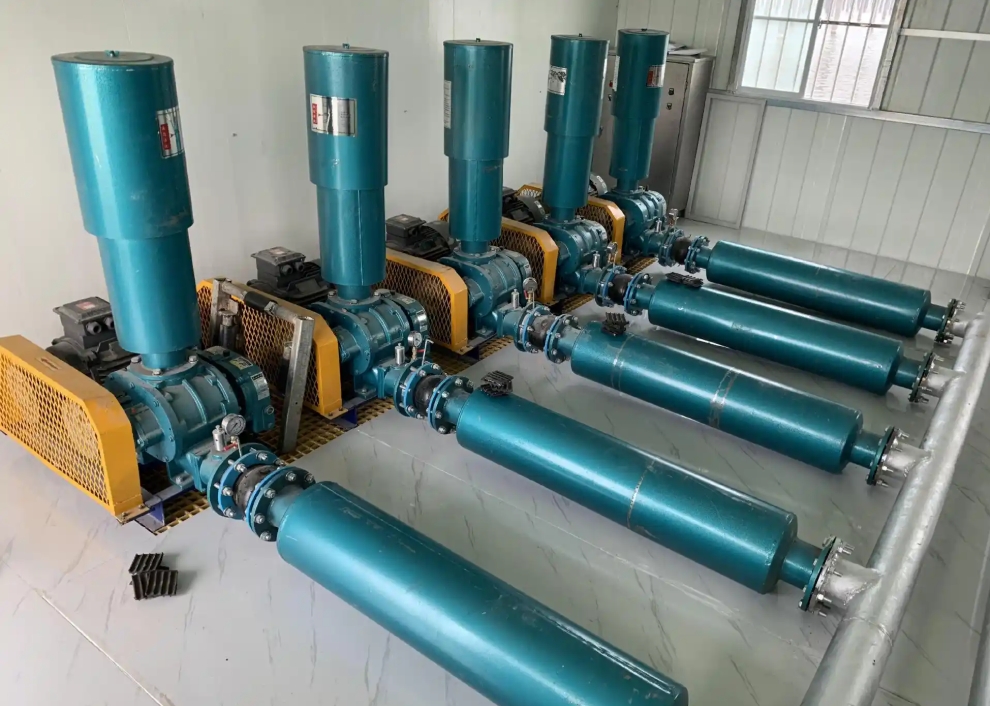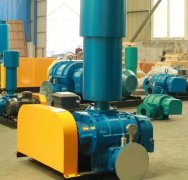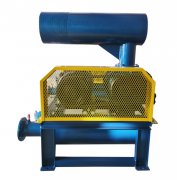Differences between Roots blower and vacuum pump
There are significant differences between Roots blowers and vacuum pumps in multiple aspects. The following is a detailed comparative analysis:
1、 Working principle
Roots blower: Roots blower is a type of positive displacement compressor that works by using two interlocked impellers to compress and transport gas through relative motion within a cylinder. When the impeller rotates, the gap between them and between the impeller and the casing remains unchanged, thereby compressing the gas from the suction port to the discharge port through continuous rotation and discharging the gas.
Vacuum pump: A vacuum pump is a device used to improve, generate, and maintain a vacuum in a closed space. Roots vacuum pump is also a type of positive displacement compressor, which compresses gas from the suction port through two interlocked impellers and then discharges it into the external environment, thereby creating a vacuum. However, different types of vacuum pumps may use different working principles, such as gas capture and gas transport.
2、 Functions and Applications
Roots blower: Roots blower is mainly used for gas transportation and pressurization, such as air pressurization, sewage treatment aeration, cement transportation, etc. It can provide a large amount of gas flow and operate within a pressure range, suitable for gas delivery and pressurization systems in low-pressure environments.
Vacuum pump: Vacuum pumps are mainly used to generate vacuum and are widely used in metallurgy, chemical industry, food, electronic coating, semiconductor manufacturing and other fields. A vacuum pump can generate a highly stable vacuum environment, meeting the strict requirements for vacuum degree in high-tech fields.
3、 Structural characteristics
Roots blower: Roots blowers are usually composed of a casing, wall panels, impellers, oil tanks, and mufflers. The impeller is often designed in a three blade or four blade shape to reduce air pulsation and noise, and improve operational stability. The structure of Roots blower is simple, easy to manufacture, and the installation method is flexible and versatile.
Vacuum pump: The structure of a vacuum pump may vary depending on the type, but typically includes key components such as the pump body and impeller. Roots vacuum pumps typically use two hexagonal or octagonal impellers, with a small gap between them, and require lubrication with lubricating oil to maintain sealing. In addition, vacuum pumps may also require auxiliary equipment such as front-end pumps to meet high negative pressure requirements.
4、 Selection and sealing method
Roots blower: When selecting a Roots blower, factors such as pressure, air volume, and medium temperature need to be considered, and suitable models and specifications should be selected according to specific application scenarios. The sealing method of Roots blower is relatively simple, but it also needs to ensure that the gas does not leak to ensure work efficiency.
Vacuum pump: The selection of a vacuum pump needs to consider factors such as vacuum degree, pumping rate, and working environment. Due to the higher requirement for sealing performance of vacuum pumps, special attention should be paid to the selection of sealing methods when selecting, to ensure that the vacuum pump can work stably and achieve the required vacuum degree.
In summary, there are significant differences between Roots blowers and vacuum pumps in terms of working principles, functions and applications, structural characteristics, as well as selection and sealing methods. Therefore, when choosing mechanical equipment, the appropriate Roots blower or vacuum pump should be selected based on specific application scenarios and requirements.



